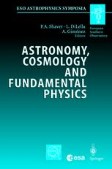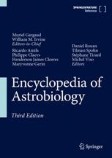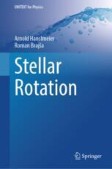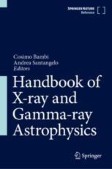Search
Search Results
-
Diversity of Planetary Systems: Formation Scenarios and Unsolved Problems
Models of planet formation and of the orbital stability of planetary systems are described and used to discuss possible characteristics of...
-
Planetary population synthesis and the emergence of four classes of planetary system architectures
Planetary population synthesis is a helpful tool to understand the physics of planetary system formation. It builds on a global model, meaning that...

-
Formation of Planetary Systems
A brief summary of our current understanding of the physical structure and evolution of circumstellar disks - the sites of planet formation - is...
-
Tunable Laser Spectrometers for Planetary Science
Distinguishing planetary formation and evolution pathways and understanding the origins of volatiles on planetary bodies requires determination of...

-
Formation of a Ni3Al Intermetallic Coating by Cold Spray Deposition of a Ni–Al Powder Mixture Mechanically Processed in a Planetary Mill
AbstractSpecific features of the formation of a Ni 3 Al intermetallic coating by cold gasdynamic spraying of a Ni–Al powder mixture mechanically...

-

-
Venus as an anchor point for planetary habitability
A major focus of the planetary science and astrobiology community is understanding planetary habitability, including the myriad factors that control...

-
Extrasolar Planetary Systems
This paper is an updated version of lectures given at the Helmholtz Summer School on Extrasolar Planetary Systems (Potsdam, 2003). It includes five...
-
Formation of Stars
In this chapter we discuss the formation of stars. The formation of stars can be observed in various gas nebulae, and the formation process is...
-
Extra-Solar Planetary Systems in the VLT Era
Radial Velocity surveys have revealed 63 exoplanets (M $\sin{i}$...
-

-

-
Plasmas in Planetary Interiors
We give an overview of the properties of matter in planetary interiors. Of special interest are the equation of state and the conductivities. This...
-
Planet Formation
Motivating the study of planet formation is not difficult for any curious audience. One of the fundamental human questions is that of origins: “where...
-
The X-ray Emission from Planetary Nebulae
Planetary nebulae, the progeny of low- and intermediate-mass stars, are formed by the interaction of the fast stellar wind from its central star,...
-
An algorithm for coalescence of classical objects and formation of planetary systems
Isaac Newton formulated the central difference algorithm (Eur. Phys. J. Plus (2020) 135:267) when he derived his second law. The algorithm is under...

-
Magnetic Reconnection at Planetary Bodies and Astrospheres
Magnetic reconnection is a fundamental mechanism for the transport of mass and energy in planetary magnetospheres and astrospheres. While the process...

-

-
Nitrogen isotopic ratio and abundance in selected ordinary chondrites: clues for their formation in proto-planetary disk
Nitrogen isotopic composition and abundances of eleven ordinary chondrites (OCs), Mahadevpur (H4/5), Didwana-Rajod (H5), Monahans (1998) (H5),...

-
Planetary Radio Interferometry and Doppler Experiment (PRIDE) of the JUICE Mission
Planetary Radio Interferometry and Doppler Experiment (PRIDE) is a multi-purpose experimental technique aimed at enhancing the science return of...

